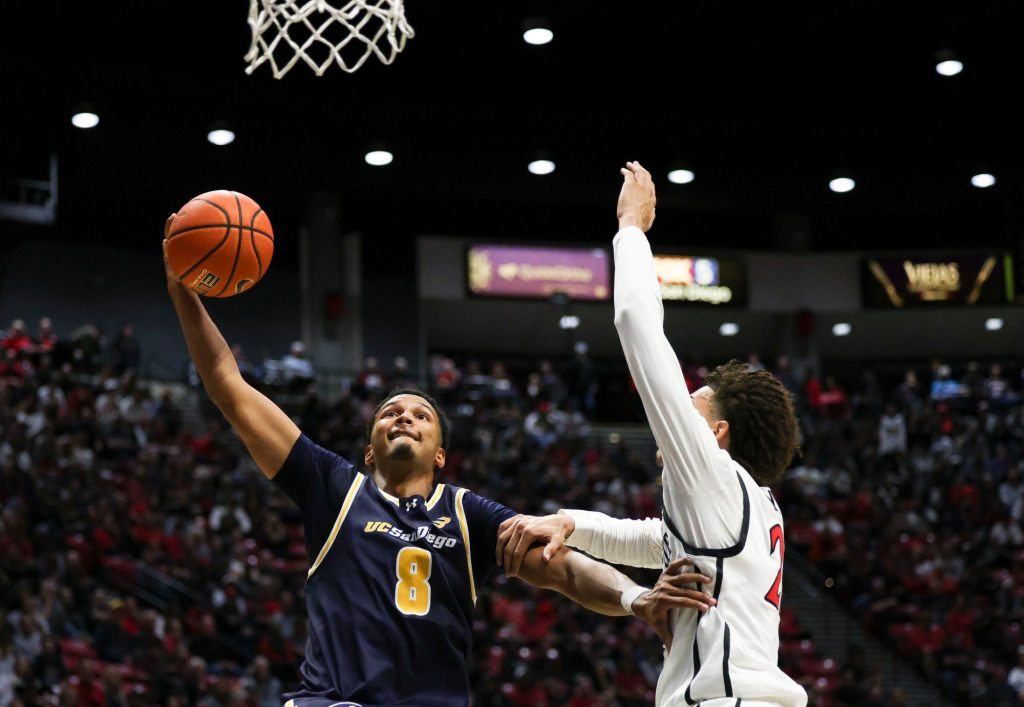Your Local SEO and Digital Marketing Experts in San Diego County
Six reactions to the inaugural opening round of the College Football Playoff .:
1. The first on-campus playoff games in college football history resulted in the following score: Home teams 145, visitors 68.
Average margin of victory: 19.3 points.
Four games over 28 hours and not a competitive fourth quarter among them. The in-stadium atmosphere was fantastic, but it was bad television. And bad television is bad for college football.
In fairness, lopsided playoff games are nothing new.
There were plenty of blowouts in the semifinals during the playoff’s four-team era.
There are blowouts in the early rounds of the NFL playoffs.
There are blowouts in the early rounds of the NCAA Tournament.
But there’s a difference, which we’ll address momentarily.
2. The primary competitive takeaway from the weekend is more reminder than lesson.
The four winners played at home, were the higher seeds and, crucially, had bigger, stronger and better players at the line of scrimmage.
The sport’s postseason has changed dramatically, but the foundation for success has not. Notre Dame, Penn State, Texas and Ohio State were dominant up front and, as a result, dominant on the scoreboard.
The CFP could expand to 16 teams or 32 or 64, but the fundamental truth will remain: Only a handful of teams each season have the talent on the line of scrimmage to advance deep in the tournament.
Nothing will change that reality. There’s no equivalent of the 3-point line that allowed Oakland to take down Kentucky or Yale to topple Auburn last spring. It’s all about talent in the trench.
But unlike the NCAAs or the NFL, college football has the opportunity to make short-term structural changes to enhance the drama.
3. The conference commissioners who serve as the CFP’s management committee will meet next month in Atlanta to begin discussing adjustments for the 2026 season, when a new contract cycle with ESPN begins.
The deal will spin off $1.3 billion annually for six years. But everything else about the CFP in the 2026 season, including the number of teams, is in flux.
Common sense and organizational unity are not exactly hallmarks of college football in general, much less the CFP. But the commissioners should use the blank slate available to create a better opening-round product.
That’s the goal, after all: Provide the public with the most compelling content possible — not for fans in the stadiums but for the diehards and casual observers who watch on television and drive the ratings that generate the revenue for ESPN, which serves as the sport’s ATM.
To that end, the seeding process must change. The top four seeds should be reserved for the highest-ranked teams and not assigned exclusively to conference champions.
Were the seeds based on the rankings, No. 1 Oregon would not be facing Ohio State, which is ranked sixth but seeded eighth, in the quarterfinals.
Were the seeds based on the rankings, Boise State — which is seeded third but ranked ninth — would have faced Indiana in the opening round instead of having a bye into the quarterfinals.
4. Limiting the number of blowouts is vastly more important now than it was under the four-team format.
Why? Because the semifinals were typically played on New Year’s Day, which belongs to college football.
The opening-round games on the weekend before Christmas have direct competition … from the NFL.
It’s tough enough for the sport to compete head-to-head with the king. Lopsided games on a regular basis will only exacerbate the situation.
Typically, college football television ratings are made public on Wednesday. That could change this coming week because of Christmas — the audience data might not be available until Thursday.
In the ratings game as in the on-field games, we expect a blowout.
5. Ohio State’s smackdown of Tennessee confirmed our pre-CFP belief that the Buckeyes are one of a handful of teams capable of winning the national title.
The others: Oregon, Notre Dame and Georgia, although Texas probably belongs on the list, as well.
But the outcome in Columbus carried broader implications. In squashing the Volunteers, Ohio State stripped the SEC of what would have been a major talking point for the conference and its ESPN media machinery: That the double-digit losses by SMU and Clemson proved the ACC didn’t deserve two teams.
In other words, the SEC could have used those losses to argue that it deserves three or four automatic bids in the next iteration of the playoff (along with the Big Ten), thereby squeezing access for the ACC, Big 12 and Group of Five.
We could get there anyhow. SEC commissioner Greg Sankey is undoubtedly preparing to use his influence as the sport’s most powerful figure to insist on format changes that benefit his conference.
But had the Vols played a competitive game in Columbus while the ACC teams floundered, Sankey would have possessed that much more leverage in the management committee’s meeting next month in Atlanta.
Everything about the future of the sport, including the postseason structure, must be viewed through the lens of the SEC and Big Ten.
6. Four games and four blowouts later, the Hotline was left pondering which teams have reason to be frustrated with the selection and seeding process:
• Oregon is near the top of the list, of course.
As a reward for winning the Big Ten and earning the No. 1 seed, the Ducks are matched against Ohio State in the quarterfinals and not Arizona State or Boise State.
(Oregon is an underdog against the Buckeyes in the Rose Bowl, by the way.)
• Notre Dame has a case, too.
The Irish were No. 5 in the final rankings. But as the No. 7 seed, they face No. 2 Georgia in the quarterfinals, instead of No. 4 Penn State.
• And there’s one more: BYU.
We addressed the Cougars’ situation prior to the CFP selection day and argued they were grossly under-ranked based on their resume, particularly compared to SMU.
The Cougars beat SMU head-to-head in Dallas and have a better strength-of-record and strength-of-schedule but were seven spots behind the No. 10 Mustangs and watched SMU grad the final at-large berth.
We suspect they would have been more competitive Saturday morning in Beaver Stadium.
Your Local SEO and Digital Marketing Experts in San Diego County










